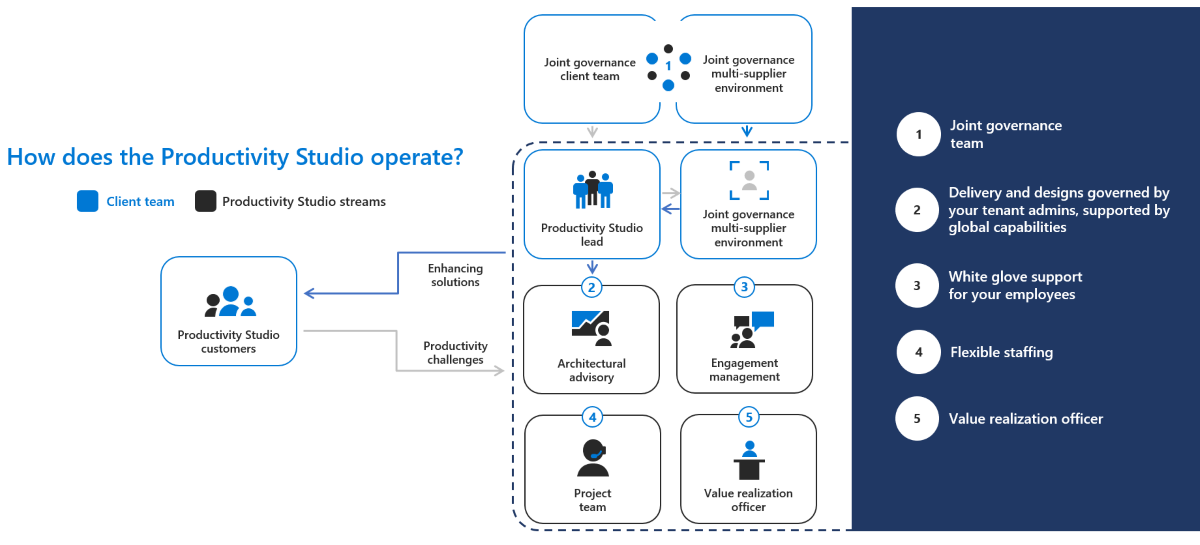This content has been archived, and while it was correct at time of publication, it may no longer be accurate or reflect the current situation at Microsoft.
Microsoft’s Mike Borth doesn’t mind looking for things, but he thinks there might be better uses of his time.

Borth oversees a global team supporting field marketing operations. It’s his responsibility as a business and operations manager to look after the budget, supplier relationships, and other operational aspects of the Microsoft Field Marketing team in Worldwide Marketing and Operations.
Managing budgets and fiscal year planning had always been a highly manual, labor-intensive process and when that process was complete, the results were often stored in multiple locations based on the operating system used to create them.
“Even though I’m good at looking for information and good at finding it, I thought we should create an experience where I could find the answers that I need with one click of a tile,” Borth says.
With this idea in tow, Borth turned to Joe Martin, who runs Productivity Studio, and Greg Kriegler, a client executive at Avanade—a joint venture between Accenture and Microsoft—to see how they could help. Like other Microsoft employees, Borth wanted to find out if the internal consulting service could help his team get more out of their Microsoft 365 and Microsoft Power Platform investments.
Borth’s challenge is one often encountered by the Productivity Studio, a center of excellence that helps Microsoft business groups transform old ways of manual siloed work to integrated and automated experiences, leveraging the Microsoft 365 stack in a new way.
Simply put, Kriegler describes Productivity Studio as “the operational organization designed to help Microsoft employees get the most out of what’s next.”
Now, I have a seamless ability to look across our business through four or five modules inside of our business application suite. It created massive efficiency in our process.
– Mike Borth, business and operations manager

To help Borth get easier access to his information, the Productivity Studio team designed a holistic approach to help him run his operations more efficiently in a scalable manner.
This vision included an automation layer between various siloed applications that gave his team a dynamic operational platform where all the information, such as budgets, forecasts, and purchase orders, was captured in one cohesive ecosystem. This allowed Borth and his team to see any information they needed to make financial decisions and provided an easy user experience through a set of customizable drop-down menus.
“Now, I have a seamless ability to look across our business through four or five modules inside of our business application suite,” Borth says. “It created massive efficiency in our process.”
What’s even better? “I don’t have to spend time looking for things anymore,” he says.
[Learn how Microsoft is powering digital transformation with Modern Data Foundations. Find out why deploying Microsoft Teams across Microsoft hinged on good governance.]
Going beyond cloud migration
Productivity Studio was born out of the question of “what’s next.”
Originally, Microsoft established the studio to accelerate Microsoft’s migration from Microsoft SharePoint on-premises to online. After they got everything in the cloud, though, they found themselves in an existential crisis.
“You’re in the cloud, so now what? How do you design your org to take full advantage of being in the cloud?” Kriegler says. “Joe and I said, ‘Let’s build amazing experiences that really move the needle on healthy teamwork and productivity.’”
That idea evolved into Productivity Studio, which was established in 2014 as a service model that could help other teams at Microsoft get the most out of Microsoft’s Productivity Tools.

The foundation of this new model was built on five pillars:
- A staffing model that blends Microsoft employee and supplier resourcing through Avanade, which has deep knowledge and experience with Microsoft clients.
- Ingrained architectural oversight to maintain strict security and privacy compliance.
- Engagement management provides white glove support to answer functional questions and coordinate answers to technical questions.
- An assigned project team with flexible staffing levels that can be customized to each team’s needs.
- A value realization officer who partners with Productivity Studio’s business customers to align budget, outcomes, and solutions.
“When a Productivity Studio customer comes to us with a problem, we’ve likely seen something similar somewhere else at Microsoft,” Kriegler says. “More often than not, we can bring in a solution twice as fast and with more cost-efficiency.”
That inspiration to solve for what’s next has so far translated into hundreds of Productivity Studio projects for teams across Microsoft. The studio team has been deployed to solve issues from how to better run complex meetings to creating a Microsoft Teams Command Center, which replaced the manual process of managing individual Microsoft Teams with a Microsoft SharePoint Framework (SPFx) that enables management at scale and encourages adoption.
The new remote world
Digital transformations have gone into hyperdrive across Microsoft and Microsoft Digital), the engineering organization that builds and manages the products, processes, and services that Microsoft runs on, to accommodate remote work in response to COVID-19. As Productivity Studio evolved to focus on cloud optimization, it couldn’t have been in a better position to help teams adapt to the new reality.
Take Pouneh Kaufman, a principal program manager responsible for migrating Microsoft 365 users from older platforms like Skype for Business to Microsoft Teams, and is now responsible for Productivity Studio. When they faced challenges deploying Microsoft Teams templates in mass scale, Productivity Studio stepped in to build the Microsoft Teams Command Center and delivered customizable on-demand templates for various organizations in Microsoft.
Kaufman says that with most companies working in a hybrid workforce model, it’s imperative that Microsoft shares the story of how it uses Microsoft 365 to work flexibly internally. That includes building apps, bots, and business solutions that enable its employees to be highly productive during these challenging times.
“We need to democratize the way we build and deliver value to enable success for our business and employees,” Kaufman says.
She says this is exactly what Productivity Studio offers.
“I want to be able to transform quickly,” Kaufman says. “Let’s make sure we’re going after solutions that really drive productivity. And we don’t have to invest years and years of work.”
Productivity doesn’t mean ‘do more.’ It means ‘achieve more.’ It’s about how we can tailor the experiences we build to the well-being of the people using the products.
– Greg Kriegler, client executive at Avanade
Kriegler has thought a lot about the nature of productivity in general, and what it means within the context of a company like Microsoft. That has guided much of what he strives for in this model.
“Productivity doesn’t mean ‘do more.’ It means ‘achieve more,’” he says. “It’s about how we can tailor the experiences we build to the well-being and balance of the people using the products.”
Learn how Microsoft is powering digital transformation with Modern Data Foundations.
Find out why deploying Microsoft Teams across Microsoft hinged on good governance.






